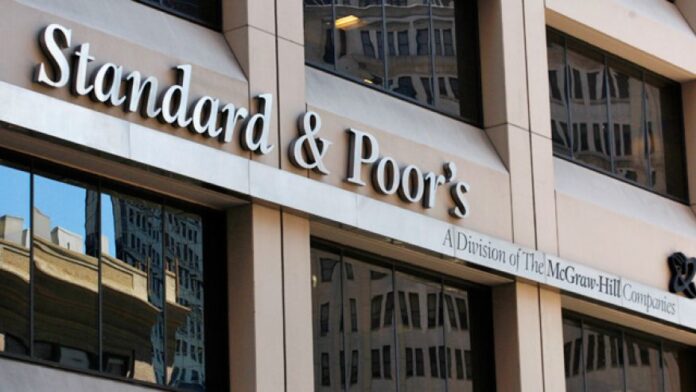On Thursday the Standard & Poor’s (S&P) rating agency confirmed Pakistan’s long-term and short-term sovereign rating ‘B-‘ and ‘B’ while retaining a ‘stable’ long-term outlook.
The rating agency based in New York also affirmed the long-term issue rating of ‘B-‘ for senior unsecured debt and sukuk trust certificates in Pakistan. It said the country’s rating remains constrained by a tight tax base and risks to domestic and external security, which remain high.
Although the security situation in the country has progressively improved over the past few years, ongoing vulnerabilities weaken the effectiveness of the government and weigh on the business climate.
It said the Covid-19 pandemic worsened Pakistan’s economic decline, but expected real GDP in the current fiscal year to rebound to 1.3 per cent. The S&P said, “We expect the credit metrics of the sovereign to remain under pressure for two to three years to come.”
Nonetheless, the agency noted that the government had made good progress towards substantial fiscal and economic reforms before the start of the global coronavirus outbreak, and that policy momentum would return once the pandemic has been better contained. Multilateral and official funding will continue to be critical for sustainability of Pakistan’s external debt.
The rating agency said it can lower its “ratings if the fiscal, economic, or external indicators of Pakistan continue to deteriorate, placing pressure on the government’s external debt repayments.” Indications of this would include larger than expected external or fiscal imbalances.
It also said, “While Pakistan had made progress toward consolidating its fiscal accounts during the first nine months of its Extended Funding Facility programme with the IMF, related imbalances have been worsened by much slower economic growth since March 2020.”
In the current fascial year, the government is likely to concentrate on implementing the new revenue initiatives last year, rather than adopting additional policies against a backdrop of weak business and consumer sentiment.
Taken together with its relatively quick population growth of about 2% per year, real economic growth per capita is expected to remain negative for a third straight year, at -0.7%. This will lead to a further decline in Pakistan ‘s weighted average per capita growth rate of 10 years to just 0.6%, far below the global 1.5% median for comparable income-level economies.
The roughly 38% depreciation of the Pakistani rupee against the dollar between 2017 and 2020 also led to a significant decline in the nominal GDP per capita of the economy. “We expect GDP per capita to remain just over $1,200 by the end of this fiscal year, compared to nearer $1,600 in fiscal 2018.”
Domestic security challenges and widened hostility with neighboring India and Afghanistan will also constrain growth. The former government of the Pakistan Muslim League has improved the security situation within the country, and we’d expect the government to continue this positive momentum.



